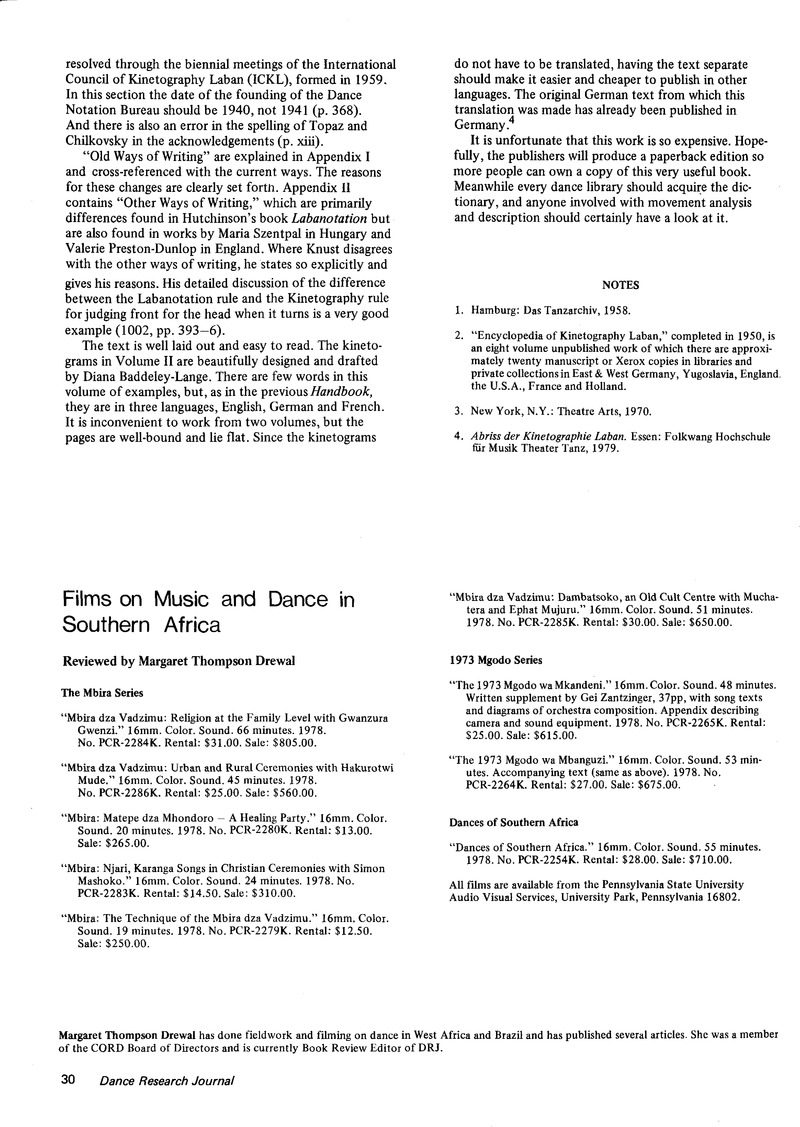No CrossRef data available.
Published online by Cambridge University Press: 08 April 2017

1. The last two films listed, “The Technique of the Mbira” and “Dambatsoko,” were unavailable to me for preview at the time.
2. Berliner, Paul, “Music and Spirit Possession at a Shona Bira,” African Music (Roodepoort, South Africa), 5(4):130–39, 1975–1976Google Scholar.
3. A brochure entilted “PCR: Films in the Behavioral Sciences,” sent out by the Pennsylvania State University to announce the series, does include a short bibliography intended for supplementary reading, however, this brochure does not accompany the films.
4. Feld, Steve and Williams, Carroll, “Toward a Researchable Film Language,” Studies in the Anthropology of Visual Communication, 2(1):30, 32, Spring 1975CrossRefGoogle Scholar.
5. Berliner, p. 132.
6. Chopi Musicians: Their Music, Poetry, and Instruments (London: Oxford University Press, 1970 [1948]. 193 pp.)Google Scholar.
7. Zantzinger, Gei, “A Film Companion to: 1973 Mgodo wa Mbanguzi and 1973 Mgodo wa Mkandeni,” n.d., p. 2Google Scholar.
8. The Mbanguzi film was unavailable to me during the preview period.
9. Zantzinger, p. 27.
10. Zantzinger, p. 4, distinguishes the two films of the Mgodo series: “When we were reasonably sure that the performance at Mbanguzi village had been thoroughly covered, we spent several days at Chief Mkanda's village. There, we had felt the music to be not quite on a par with that of Mbanguzi. Nevertheless, the performance projected a compelling sense of power and a feeling of strong support by the village as a whole. After our extensive experience of filming the Mgodo at Mbanguzi, we succeeded in photographing the entire action almost non-stop in two days [in Mkanda]. Consequently, the Mbanguzi film has a sharpness and clarity and seems a little cold. The Mkanda film's strength is that it documents the setting and spirit of the event. Thus the pair of films complements each other, and if taken together present an accurate picture of the activities.”
11. Moyana, Tafirenyika, “Muchongoyo: A Shangani Dance,” African Arts, 9(2):40–42, January 1976CrossRefGoogle Scholar; Tracey, Hugh, African Dances of the Witwatersrand Gold Mines (Roodepoort: International Library of African Music, 1952. 156 pp.)Google Scholar.